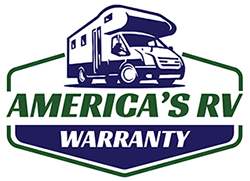
Owning and traveling by RV has so many wonderful benefits. You often have the freedom to make your own route and itinerary, allowing you to create the perfect trip. While you might have figured out your desired price point when it comes to purchasing a vehicle, there is more to the RV living cost than simply the sticker price. Here are seven other other things that you should work into your RV budget before you decide to buy.
Just like with car and health insurance, you’ll need to work RV insurance into your monthly expenses. Policies vary depending on several factors, but you can find coverage starting at just $125 annually. This covers liability and collision, but keep in mind that this price goes up the bigger your vehicle is and the more often you use it.
Your RV warranty is important because it can help lower the overall cost of ownership in the long run. While warranties don’t cover routine maintenance, getting your vehicle serviced regularly makes it less likely that you’ll need expensive repairs in the future — but if something happens, your warranty can help defray the expense of those big repairs. America’s RV Warranty offers different coverage plans at affordable rates so that you can get the coverage you need at a price that works with your budget.
Did you know that toll fees are higher for RVs and campers than those for regular vehicles? Rates vary throughout the country, but you can count on paying more pretty much anywhere that you travel in the U.S. Research the area that you plan on traveling through before a trip to get an idea of how much tolls will be. This way, you can work the cost into your budget without having to sacrifice other aspects of your trip on the fly.
Parks and campsites charge either daily, weekly, or monthly fees. The camping cost will vary depending on the amenities that you want. For example, boondocking — also known as dry camping — will have a lower rate than sites with full hookups. You’ll also find that campsite fees go up in the spring and summer during peak camping months. On average, RV parks with full hookups in the U.S. range from $25-80 a night depending on the area.
RV mileage depends on the size of your vehicle, how old it is, and the type. Either way, fuel costs are pretty high for RVs since they’re large vehicles, so plan on only getting about 8-20 miles per gallon. Diesel RVs might get more.
Different classes of RVs have gas tanks of varying sizes, so knowing how big yours is can help you budget out how much you’re going to pay at the pump during your trip. Using a tool like Gas Buddy can help you gauge these costs and where to find gas stations along your route.
You’ll also need propane tanks to fuel the heating, cooling, fridges, and hot water tank in your RV. The propane cost has been pretty stable over the last few years, hovering between $2-4 per gallon. A generator can typically run for about five hours on 20 gallons of propane. One way that you could save money on propane is by installing solar panels on your vehicle. While the initial cost is a little pricey, the panels are efficient and will save you money over time.
Keeping up on your RV’s maintenance will help to cut costs in the future when it comes to repair. This includes regular oil changes, inspections, and weatherizing to protect it from the elements. In general, you can plan on spending about $1000 a year on regular maintenance, assuming that your vehicle is in good shape and you don’t have recurring problems. Some examples of preventative maintenance include:
While these tasks might seem pesky, being handy and doing some of the work yourself can save you money on maintenance costs.
Storing your RV in your yard is great if you have the space, but not everyone has this option. If you can’t keep your RV on your property, you’ll have to look into a storage facility. The most basic storage, an open lot, typically runs for about $50 a month. If you want security and a covering, this can go up to $300 a month. Fully-equipped facilities, which are fully enclosed and climate-controlled, can cost more than $500 a month. To give you peace of mind, these facilities often have restricted access, which keeps your RV safe.
Towing your car behind your RV requires additional equipment that you’ll have to purchase separately. Towing can also add some wear and tear to your car and to your RV. This can result in more maintenance fees, as you’ll need to replace tires, change brake pads, and turn the rotors more often, as well as paying more for gas for your RV to allow it to pull the car’s extra weight.
Keeping these costs in mind gives you a realistic picture of what RV ownership is like, but there are many ways to tailor the experience to your budget. With a little planning, RV ownership and travel are more than doable, so all that’s left to do is plan where your adventure will start!
